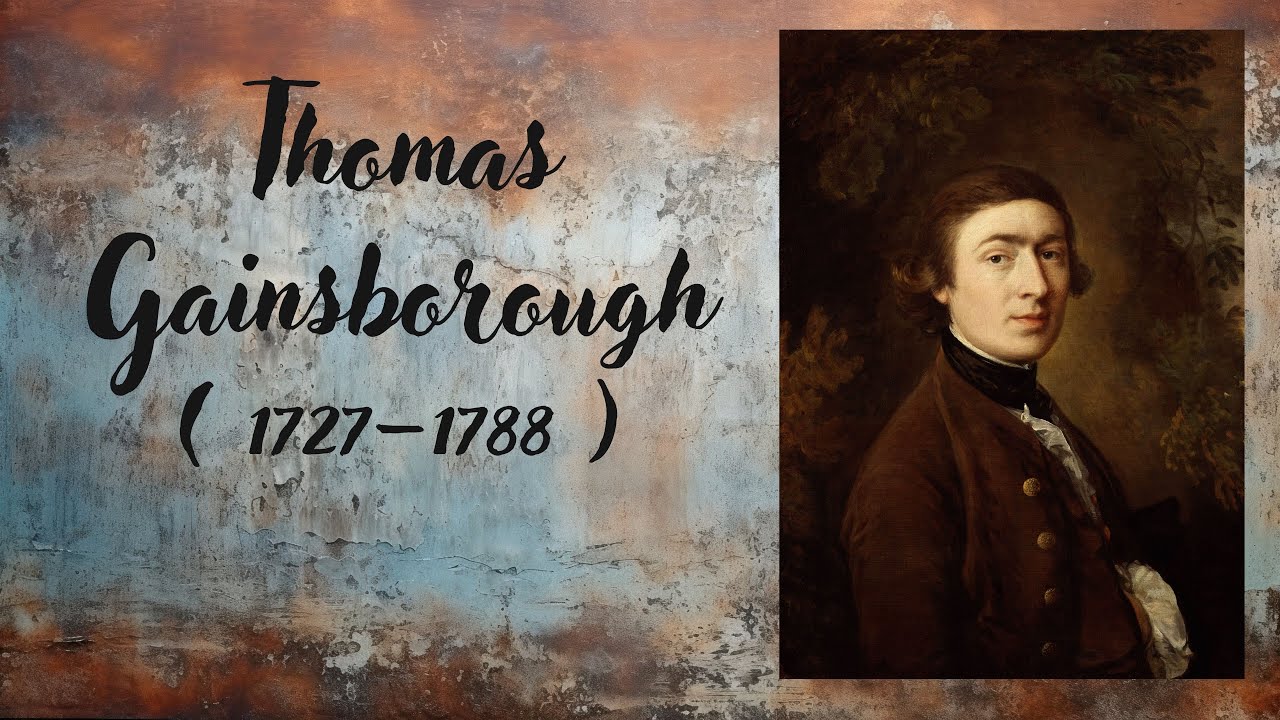
Robert Draws – Thomas Gainsborough is widely celebrated as one of the foremost painters of the Rococo era in England. His unique ability to blend portraiture with landscape painting set him apart from his contemporaries. Gainsborough’s works are renowned for their elegance, fluid brushwork, and a soft palette that captures both the beauty of nature and the grace of his subjects. Born in 1727 in Sudbury, Suffolk, Gainsborough’s early exposure to rural landscapes deeply influenced his artistic direction.
His dual mastery of portrait and landscape painting allowed him to navigate the evolving art scene of 18th-century Britain successfully. Throughout his career, Gainsborough gained a reputation as a portraitist favored by the aristocracy and as a landscape painter whose works conveyed a poetic sensibility. Gainsborough’s approach to Rococo art was distinct. Unlike some of his peers who emphasized ornate decoration and dramatic contrasts, he favored a subtler, more naturalistic style. His paintings often convey a sense of ease and spontaneity. This article explores Gainsborough’s significant contributions to Rococo portraiture and landscape painting, highlighting the techniques, themes, and influences that shaped his career.
Thomas Gainsborough’s portraits are celebrated for their ability to combine realism with an idealized elegance. He had a remarkable talent for portraying the character and status of his subjects without sacrificing artistic finesse. His portraits feature a light, airy quality, with brushstrokes that appear loose yet purposeful. This style contributed to the liveliness and depth seen in his paintings. One of Gainsborough’s signature methods was to place his sitters in naturalistic settings, often incorporating landscape elements that complement the subject’s personality. This integration blurred the lines between portraiture and landscape, creating compositions that felt dynamic and harmonious. The aristocrats and wealthy patrons who commissioned these portraits were often depicted with an air of casual sophistication, dressed in flowing fabrics and posed gracefully.
Notable works such as The Blue Boy exemplify Gainsborough’s mastery of portraiture. Painted around 1770, this piece is famous for its vibrant color palette and exquisite detailing of fabric and texture. The painting reflects both the fashion of the time and Gainsborough’s skill in rendering lifelike skin tones and subtle expressions. The Blue Boy remains an iconic example of Rococo portraiture, admired for its balance of technical skill and emotional resonance. Gainsborough’s portraits were highly sought after by English nobility. His reputation grew steadily as he gained royal commissions and was appointed a founding member of the Royal Academy of Arts. Despite his success, Gainsborough remained modest and continued to experiment with new techniques and compositions.
“Read about: The Legacy of Ilya Repin and His Iconic Barge Haulers on the Volga”
Alongside his famous portraits, Gainsborough’s landscape paintings reveal his most personal and innovative work. He preferred painting outdoors to capture the natural light and atmosphere of the English countryside. These landscapes feature soft, swirling brushstrokes and a subtle color palette that create a sense of tranquility. Gainsborough often depicted rural scenes such as trees, rivers, cottages, and rolling hills with a lyrical quality. He did not simply represent nature but interpreted its beauty through his poetic vision. Many of his landscape works show a freer style than his portraits, demonstrating his technical skill and versatility.
Unlike other artists who used landscapes only as backgrounds, Gainsborough focused on landscapes as the main subject. He showed deep appreciation for the changing moods and textures of nature. Inspired by Dutch masters like Jacob van Ruisdael, he developed a lighter and more expressive style. A notable example is Wooded Landscape with a Peasant Resting, which highlights Gainsborough’s ability to capture both detail and atmosphere. The painting invites viewers into a peaceful, intimate moment in nature, reflecting the artist’s sensitivity to his surroundings. Gainsborough often created landscape paintings for private collectors, who admired how he brought a touch of nature’s calm into urban homes. His landscapes played a significant role in shaping the English landscape painting tradition and influenced generations of artists after him.
“Read more: World Day Against Child Labour 2025: A Global Call to End Exploitation”
Gainsborough’s artistic process combined keen observation, spontaneity, and refinement. He applied quick, confident brushwork that brought movement and life to his paintings. He favored a palette of soft blues, greens, and earthy tones to enhance the naturalistic feel of his subjects. Gainsborough painted with oil on canvas and layered translucent glazes to create depth and luminosity.
He rendered textures—from the softness of skin to the delicate folds of fabric—with meticulous attention to detail. Gainsborough experimented with various compositions, sometimes leaving areas loosely finished to suggest movement or to draw the viewer’s focus to key features. Even after his death in 1788, art historians and artists continue to recognize Gainsborough’s strong influence. His work helped define the English Rococo style and inspired generations of artists. Major museums worldwide showcase his paintings, and art lovers still find inspiration in his masterpieces.